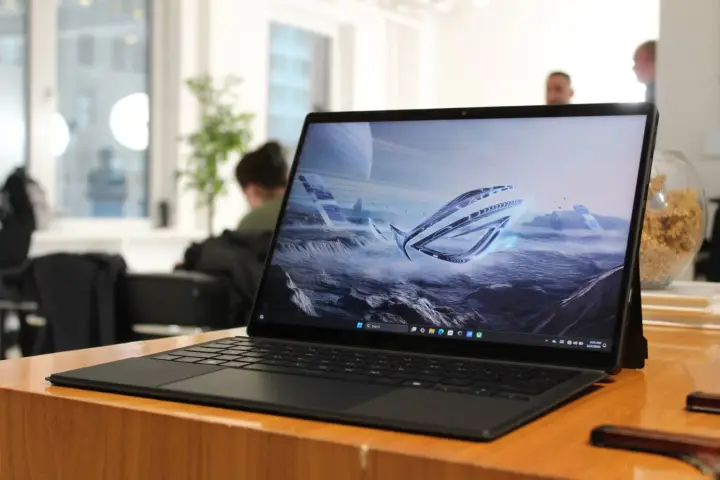It’s been a while since even many of the best gaming laptops have gotten a true refresh. That has to do with graphics cards. Nvidia has made us wait a few long years before stepping up to the new RTX 50-series cards, and without a GPU upgrade, it’s hard to justify buying an expensive new laptop.
But with the RTX 50-series officially announced, a load of new and updated gaming laptops were announced at CES this year, and having checked them out myself in person, these are the five that really caught my attention.
Razer Blade 16
It’s probably no surprise to see the Razer Blade 16 on this list — but truthfully, this is one of the biggest changes to this design in many years. The chassis has been reduced significantly over last year’s model, which was actually quite thick. This time around, it’s just 0.59 inches at thinnest and 0.69 inches at its thickest. That’s incredibly thin.
Razer says the slight incline not only helps with typing ergonomics but also with thermals, allowing for a small chamber at the bottom called a “thermal hood.” Adding in a larger vapor chamber internally and making the switch to AMD will help maintain similar thermals as the previous design despite being thinner — again, according to Razer. Don’t forget — you’re also getting up to an RTX 5090 for graphics, and the same killer OLED display.
Asus ROG Flow Z13

The ROG Flow Z13 is certainly the most unique gaming laptop I saw at CES this year. The 2-in-1 design already makes it stand out, for sure, but the chip inside is what truly makes this special. It’s one of only a few devices to use AMD’s new Ryzen AI Max+ Pro chips, which have a massive integrated GPU inside. It’s so powerful, in fact, that Asus has switched away from using a discrete RTX 4050 or 4060, which were available in last year’s model. AMD is comparing it to the Apple M4 Pro, saying it surpasses it in some performance testing. That’s a huge deal.
The fact that such a chip and such a laptop even exist make it worth mentioning on this list. But I’ve always loved the design of the ROG Flow Z13, specifically in how it keeps the heat away from your hands while gaming. If this fancy new Ryzen chip can make it a faster, cooler, and quieter laptop, I’ll be delighted.
Lenovo Legion Pro 7i

The other noticeable change is in the back, which replaces rear-facing ports with some RGB vents and returns the the array of ports to the sides. Lenovo says it’s for improved thermals, which this laptop will need if it hopes to cool the 250 watts of total power shared between the CPU and GPU. We’ll have to see how it shakes out when reviews launch, but this is one to look out for.
Asus ROG Zephyrus G14

First off, it’s made the switch from AMD to Intel — the opposite move that the Razer Blade 16 made. That means it’s configurable up to an Intel Core Ultra 9 285H and 64GB of memory. The most meaningful change, however, is an added 2mm of thickness, which is allowing Asus to stuff in up to an RTX 5080 this time around. Last year’s model topped out at an RTX 4070. And lastly, Asus has moved one of the USB-C ports to the other side of the chassis to make for more convenient charging options.
Alienware Area-51

Unlike many of the other gaming laptops on this list, the Alienware Area-51 isn’t trying to be sleek or dainty. Alienware surely wouldn’t have revived the Area-51 branding if that was the goal. That doesn’t mean the Alienware Area-51, which will come in both a 16-inch and 18-inch size, has a sloppy design. Not at all.
This is a meticulously crafted new look, harkening back to the classic Alienware vibes while still modernizing as many elements as possible. The edges are softer and more rounded again, the ring of light on the thermal shelf is refined and more subtle, and even the hinge has a more streamlined aesthetic. All are changes for the better. I still wish we were getting some better display options here like mini-LED or OLED, but it’s hard not to respect what Alienware has done with the triumphant return of the Area-51.







